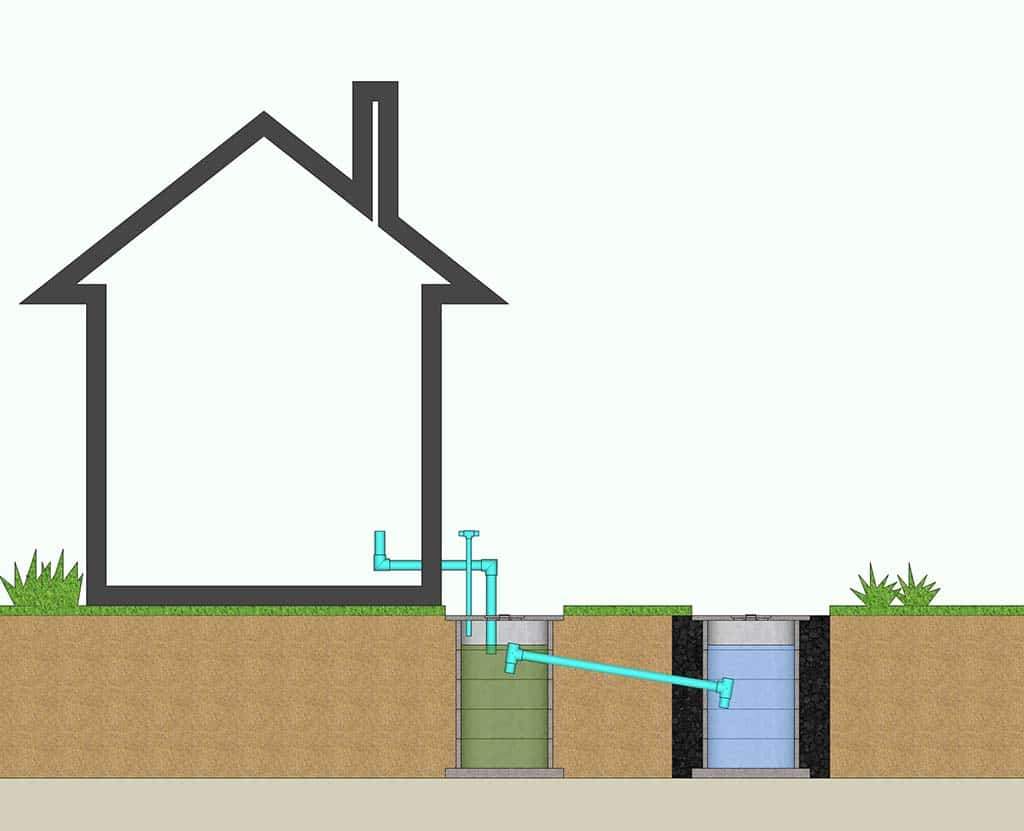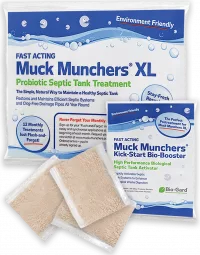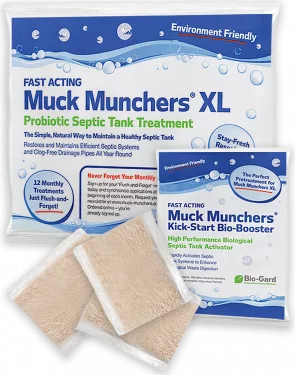Septic Tank Failure – 5 Tell-Tale Signs
A failing or failed septic tank always requires immediate attention – therefore, it pays to know what to look for.

Providing your septic tank continues to digest and break down your waste, it can be easy to assume there are no problems deeper down. However, there are a few signs that all tank owners should be looking for when it comes to septic tank failure.
How to Recognise Septic Tank Failure
Typically, a septic tank failure will normally make itself known through the appearance of
pooling water, foul smells, odd sounds or increased lush growth in your garden or lawn nearby.
You may, however, even notice these problems emerging in your indoor plumbing. (insert link to Heavy Rain & the Impact on Your Septic Tank)
Septic tank failure can occur for a variety of reasons:
- Maybe there is movement in the ground close by
- Internal parts in your tank are damaged or broken
- Trees or plants rooting into the system.
It is also worth remembering that a poorly cared-for septic tank may also develop problems akin to septic tank failure. In such a case you can help to restore your septic tank and drainfield with a Bog Busters Septic Tank Shock Treatment.
Let’s look at the five biggest tell-tale signs that your septic tank needs a little support.
1. Overflows or Standing Water Near Your Septic Tank
If your septic tank is unable to drain or break down waste properly, it stands to reason you may notice water pooling or standing near the tank outside your property. Overflowing wastewater often produces foul smells and damp patches underfoot that are clear signals.
Should you notice water starting pool or stand a short distance from your tank opening to the first chamber, it’s indicative of problems with your baffle, soakaway, or inadequate bacteria population.
2. Foul Odours Near Your Septic Tank and Drainfield
Wastewater that pools or back-ups will normally make themselves known through smells. As this is waste you are disposing of from toilets as well as sinks, taps andyour washing machine and dishwasher, the odour is likely to be foul if your tank simply isn’t draining effectively.
These bad smells may occur not only close to your tank but around your drainfield too. You may start to notice bad smells before water or waste starts to make an appearance outside your tank. So it pays to use your nose. If you smell anything untoward near your septic system, it may be time to call for help.
3. Bright Green Lush Grass Growing Near Your Septic Tank
As you may imagine, wastewater can help plants grow – and believe it or not, your grass is likely to love drinking overflowing nitrogen-rich effluent from your septic tank. If a failure in your system is not producing bad smells or visible pooling close by, if you start to notice thicker, lusher grass growing around the tank, you may well have a problem.
It may be that roots digging or growing into your tank or drains are causing wastewater to spill out and help your grass to grow thicker and more verdant. If grass close to or surrounding your septic tank is growing visibly quicker or stronger than therest of your lawn, indicative of wastewater leaking into the ground.
4. Gurgling Sounds Coming from Your Plumbing
While there are several ways to spot septic tank failures outside your home or property, there are a handful of tell-tale signs from within too. One of the first signs you may notice before you’re aware of a problem is odd, increasingly frequent gurgling problems from your interior plumbing.
If your drainage pipes are gurgling and groaning more frequently or more persistently than usual, it may be that your septic tank is struggling to drain properly. As such, it would be prudent to conduct checks outside the home. In some cases, gurgling or extra noisy pipework may be indicative of other issues. However, if you rely on a septic tank, it’s important to consider the system as a potential cause of the aggravation. Such noises can help you attend to problems in your septic tank before further problems and potential damage occur.
5. Water Backing-Up into Sinks, Toilets and Drains
One of the most aggravating and frustrating signs of septic tank failure arises in the performance of your drains, sinks, toilets, showers and baths. If nothing seems to be draining properly, or if water appears to be heading back up again, it may be that there are internal problems within your septic tank.
The reasons why water might back-up into your indoor or outdoor drains are various. In most cases, it’s worthwhile to first use a home plunger to try unblocking them yourself. At worst, you may need to call a plumber.
Before you do that, however, check your septic tank. Consider the last time youinspected your tank or topped it up with septic waste bacteria. Rather than pay an extra amount of money for a plumber to decide they’re unable to help, always head for the tank before you pick up the phone.
Avoiding Septic Tank Failures
Unfortunately, if your septic tank fails, it may mean that you have to pay for pumping-out your system, or for repairing your soakaway – And in a few cases to have your tank or drainfield replaced completely. Thankfully, these unnecessary expenses are easy to avoid, simply by inspecting and maintaining your septic system.
Regular use of Muck Munchers to help keep an adequate, healthy bacteria population is a sensible start to a proactive septic tank maintenance regime. Without aerobic tank bacteria, your septic system is at risk of backing-up and coming under incredible strain.
So – the best course of action to prevent a septic tank failure is this – use your tank for disposing and digestion of natural waste only, check your tank regularly for signs of potential problems and top-up with Muck Munchers – save time, money and heartache in the years ahead.










